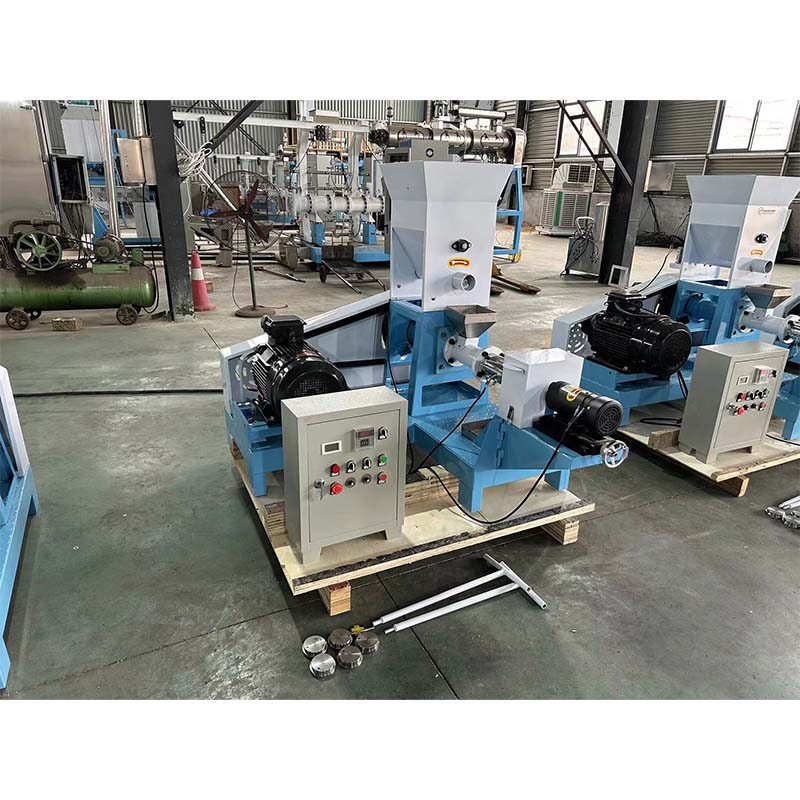fish feed mixer machine
Dec . 19, 2024 20:19 Back to list
fish feed mixer machine
The Evolution and Importance of Fish Feed Mixer Machines
In the aquaculture sector, the efficiency and quality of fish feed production play a significant role in the health of the fish, overall yield, and profitability. Among the critical equipment employed in this industry is the fish feed mixer machine. This specialized machinery has evolved over the years, aligning with technological advancements and the increasing demands of fish farming practices.
What is a Fish Feed Mixer Machine?
A fish feed mixer machine is a piece of equipment designed to efficiently blend various components of fish feed, ensuring a homogeneous mixture that meets nutritional needs. It typically combines ingredients such as fish meal, grains, vitamins, and minerals. The machine can accommodate different batch sizes and produce feed in varying formulations, catering to the diverse dietary requirements of fish species.
Key Features and Types
Modern fish feed mixers come with numerous features that enhance their functionality. Most notable is their capacity for high-speed mixing, which reduces blending time and minimizes the degradation of sensitive ingredients. The machines may be equipped with control systems that allow operators to precisely set mixing times and speeds, ensuring consistency in the feed produced.
There are various types of fish feed mixer machines, including paddle mixers, ribbon mixers, and screw mixers. Paddle mixers use a set of paddles to stir and blend components thoroughly. Ribbon mixers employ a ribbon-shaped agitator that moves materials in two directions, promoting even mixing. Screw mixers are designed with a helical screw that conveys and mixes materials efficiently. Each type has its advantages, and the choice depends on the specific requirements of the aquaculture operation.
Advantages of Using Fish Feed Mixer Machines
1. Enhanced Nutritional Quality A well-mixed fish feed ensures that all nutrients are evenly distributed, promoting better growth and health among fish. Inconsistent mixtures can lead to nutrient deficiencies or excesses, affecting fish performance.
fish feed mixer machine

2. Time Efficiency Manual mixing can be labor-intensive and time-consuming. Fish feed mixer machines significantly speed up the process, allowing producers to focus on other critical aspects of their operations.
3. Reduced Waste The precision with which machines operate minimizes the potential for feed waste. This not only conserves resources but also contributes to a more sustainable aquaculture practice.
4. Customization Modern mixers allow for the easy formulation of customized feeds, enabling farmers to adjust their recipes based on the specific needs of different fish species or to meet market demands.
5. Scalability Whether for a small-scale farm or a large aquaculture operation, fish feed mixers can be tailored to meet various production scales, allowing businesses to grow without needing to overhaul their entire feed production system.
The Role of Technology
Advancements in technology have also significantly improved fish feed mixer machines. The integration of automation and IoT (Internet of Things) has enabled real-time monitoring of the mixing process, leading to greater accuracy and efficiency. Operators can analyze mixing performance and make adjustments from their smartphones or computers, streamlining production and reducing human error.
Conclusion
As the aquaculture industry continues to grow, the demand for effective and efficient feed production will only increase. Fish feed mixer machines stand at the forefront of this evolution, strategically positioned to enhance productivity and support sustainable fish farming practices. By ensuring high-quality, homogenous feed, these machines play a crucial role in maintaining the health of fish populations and the success of aquaculture businesses worldwide.
The introduction of new technologies will undoubtedly further enhance the capabilities of fish feed mixers, leading to even greater efficiency and sustainability in the future. Aquaculture professionals should embrace these innovations to stay competitive in an ever-evolving market, ensuring that they can meet consumer demands while promoting responsible farming practices. The investment in fish feed mixer machines is not just a decision for today but a strategic commitment to the future of aquaculture.
-
Hot Sale 24 & 18 Door Rabbit Cages - Premium Breeding Solutions
NewsJul.25,2025
-
Automatic Feeding Line System Pan Feeder Nipple Drinker - Anping County Yize Metal Products Co., Ltd.
NewsJul.21,2025
-
Automatic Feeding Line System Pan Feeder Nipple Drinker - Anping County Yize Metal Products Co., Ltd.
NewsJul.21,2025
-
Automatic Feeding Line System - Anping Yize | Precision & Nipple
NewsJul.21,2025
-
Automatic Feeding Line System - Anping Yize | Precision & Nipple
NewsJul.21,2025
-
Automatic Feeding Line System-Anping County Yize Metal Products Co., Ltd.|Efficient Feed Distribution&Customized Animal Farming Solutions
NewsJul.21,2025






